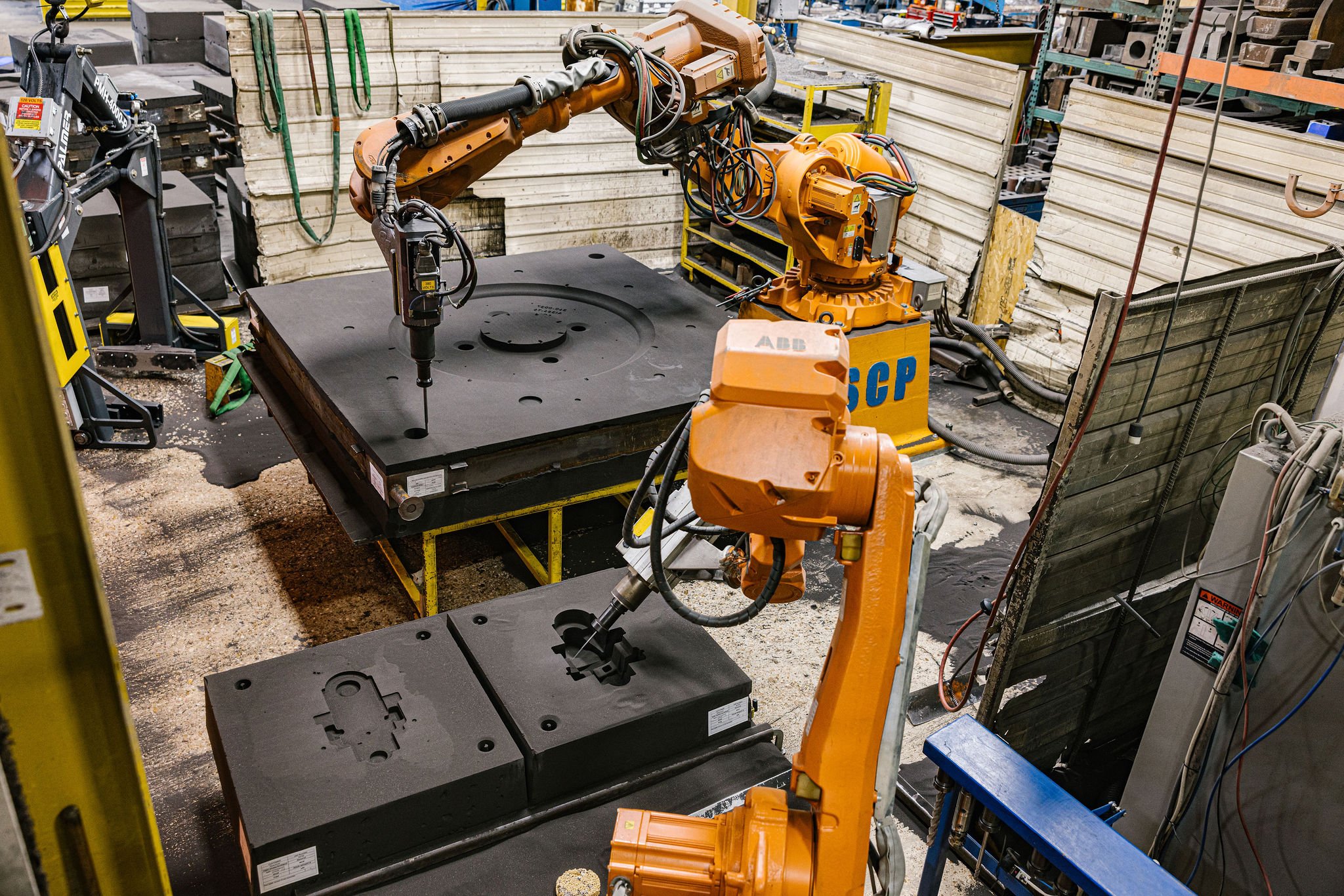Precision Robocasting for Complex, One-Time Designs
At One-Off Castings, we specialize in advanced robocasting—a patternless, tech-forward casting method built for speed, flexibility, and precision. This process merges traditional foundry craftsmanship with digital manufacturing to deliver custom, high-quality components, perfect for prototypes, R&D, or low-volume production.
How Robocasting Works
1. You Provide the 3D Model
Our robocasting process starts with your CAD file. From there, we design a mold package tailored to your part specifications.
2. Custom Mold Creation
We use your 3D model to generate a precise mold using our robotic systems—cutting weeks off typical lead times compared to traditional pattern-making.
3. Built for Flexibility
Need to tweak your design later? No problem. Robocasting allows for quick changes and updates, making it an ideal solution for one-off or prototype parts that might evolve.
Our Robotic Capabilities
ABB 6700 Series
Payload: 400+ lbs
Reach: 120+ inches
Quantity: 2 robots
Perfect for handling large and complex molds with high strength requirements.
ABB 4400 Series
Payload: 130+ lbs
Reach: 70+ inches
Efficient, nimble, and precise for medium-scale projects.
ABB 4600 Series
Payload: 90 lbs
Reach: 100 inches
Ideal for detailed, mid-size components that require accuracy and speed.
Why Choose Robocasting?
✓ Patternless Production
Save time and cost—no need for traditional patterns.
✓ High Customization
Create complex internal geometries and unique forms that are impossible with traditional sand casting.
✓ Faster Turnarounds
Cut down your project timeline without sacrificing quality—perfect for short-run or prototype parts.
Frequently Asked Questions
What are the advantages of robocasting over traditional methods?
Robocasting eliminates the need for patterns, offers faster lead times, and allows for incredibly complex, customized parts—all while reducing labor and material costs.
Can robocasting accommodate design changes?
Yes! Since it's CAD-based and patternless, robocasting is ideal for iterations and changes between runs.
What types of projects are best for robocasting?
One-off or low-volume production
Complex or intricate geometry
R&D prototypes
Custom engineering parts
Short lead-time jobs




